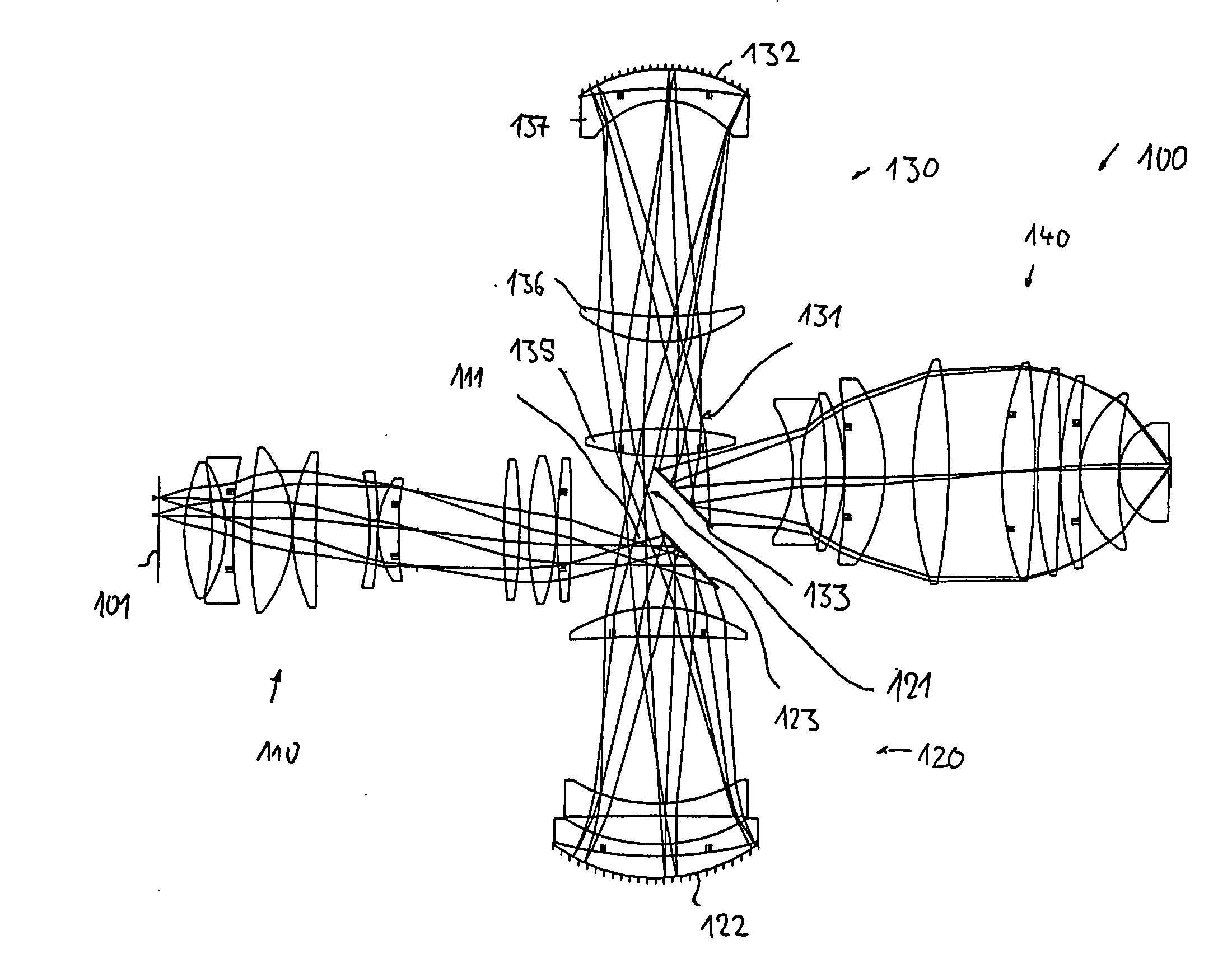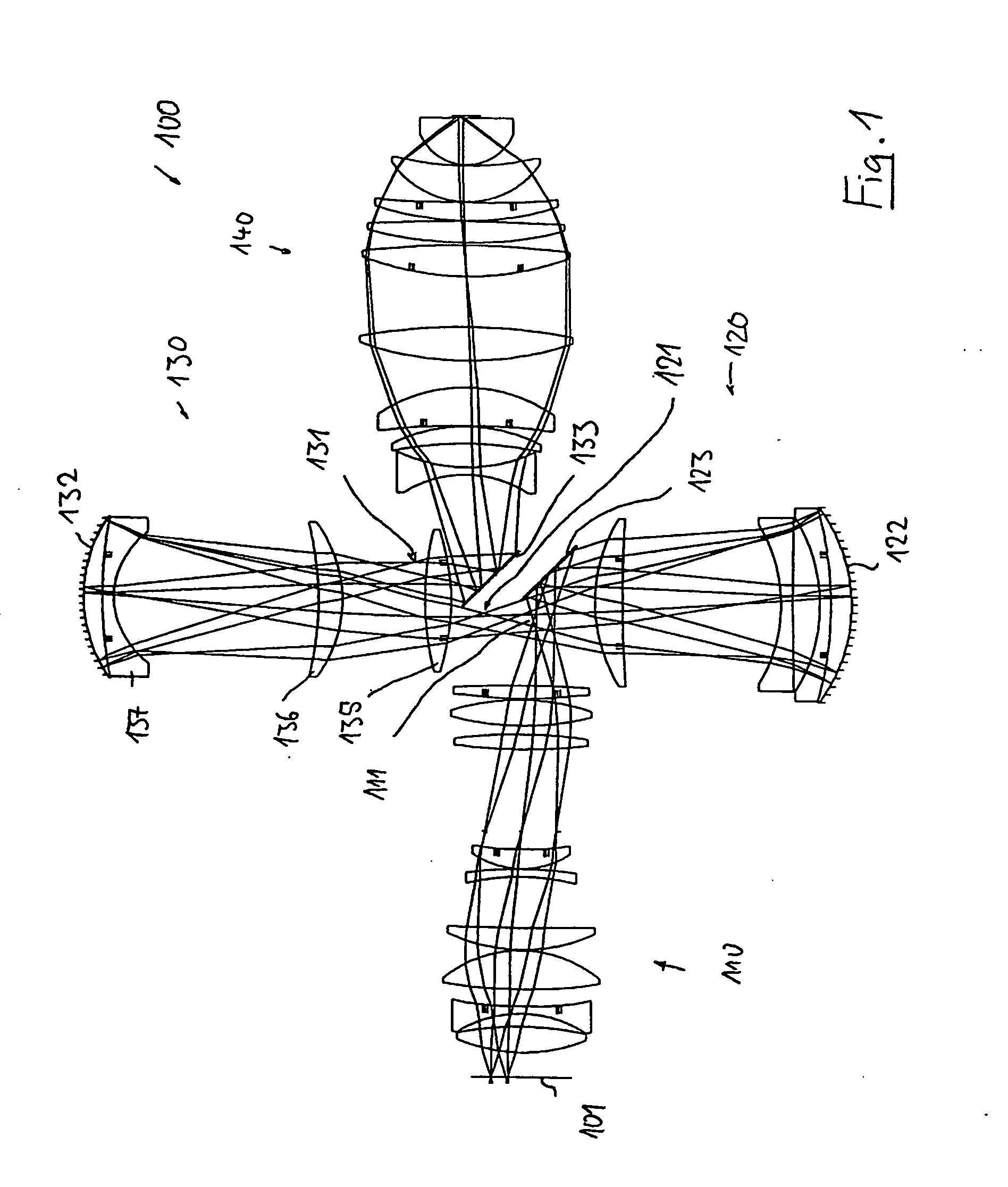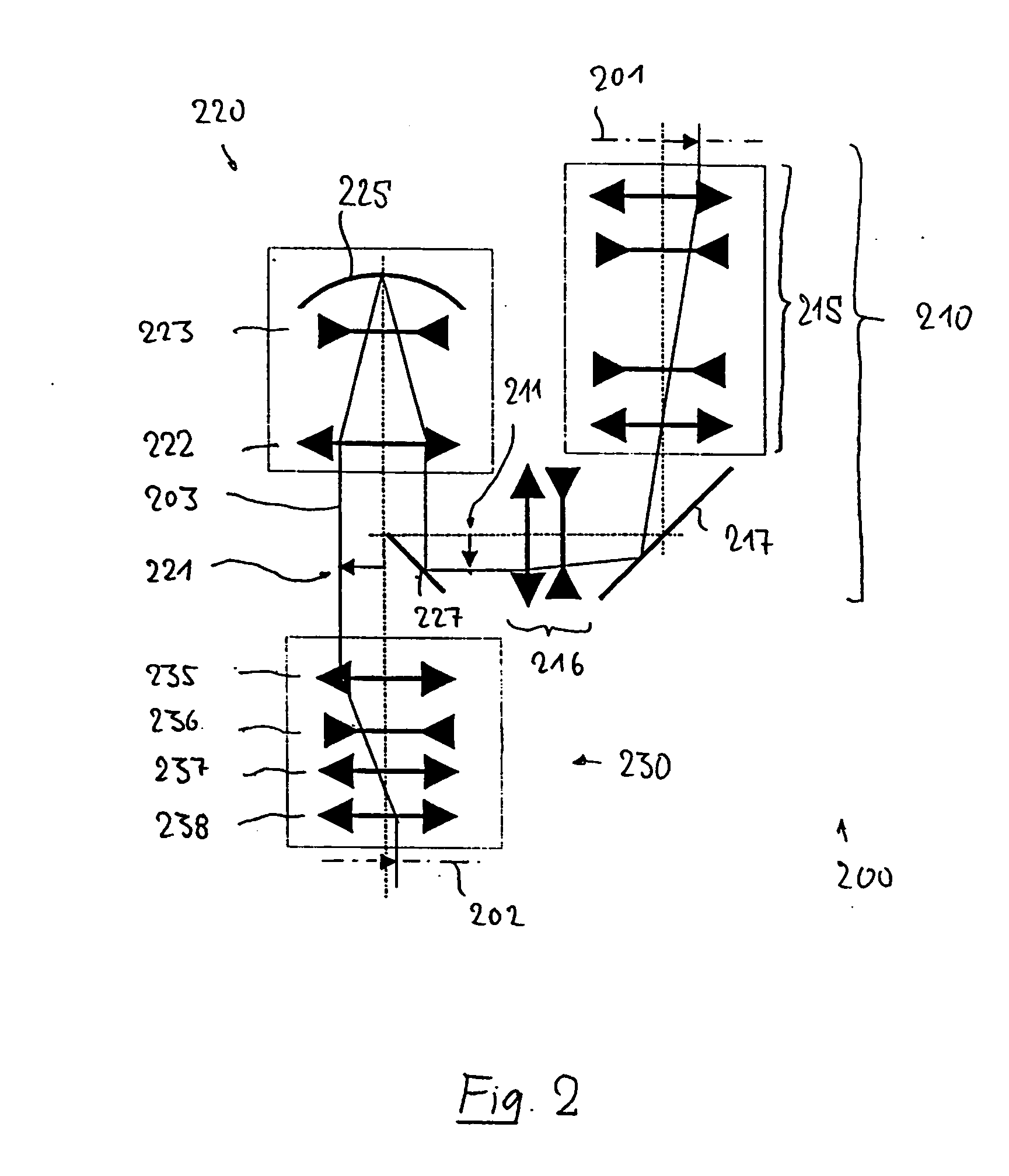Catadioptric projection objective with geometric beam splitting
a technology of geometric beams and projection objectives, applied in the field of catadioptric projection objectives, can solve problems such as polarization problems and physical space problems
- Summary
- Abstract
- Description
- Claims
- Application Information
AI Technical Summary
Benefits of technology
Problems solved by technology
Method used
Image
Examples
first embodiment
[0058]FIG. 1 shows a lens section through a projection objective 100 which has a cruciform structure and has two coaxial catadioptric objective parts as well as two refractive objective parts which are arranged on the input side and output side of the objective. This is used to image a pattern, which is arranged on its object plane 101, of a mask on a reduced scale on its image plane 102, which is aligned parallel to the object plane. It comprises a first, refractive objective part 110, which images the object field in a first, real intermediate image 111, a second, catadioptric objective part 120 which images the first intermediate image in a second real intermediate image 121, a third, likewise catadioptric objective part 130, which images the second intermediate image in a real third intermediate image, and a fourth, refractive objective part, which images the third intermediate image 131 on the image plane 102 on a reduced scale. Each of the catadioptric objective parts has a co...
fourth embodiment
[0090]FIG. 4 shows the projection objective 400. Identical or corresponding elements or element groups are annotated with the same reference symbols as in FIG. 2, increased by 200.
[0091] The refractive first objective part 410 images the object field on a first intermediate image 411, which is located downstream from the first folding mirror 417 in the beam direction. This is thus arranged within the first refractive objective part 410, in its end area. The catadioptric objective part 420 images the first intermediate image 411 on a second intermediate image 421, which is located geometrically between a mirror edge close to the axis of the first folding mirror 417 and the object plane, in the immediate vicinity of this mirror edge. The second intermediate image is imaged by a third, refractive objective part 430 on the image plane 402, without any further intermediate image. This objective part has a second folding mirror 427 arranged between the first and the last lens of the objec...
PUM
 Login to View More
Login to View More Abstract
Description
Claims
Application Information
 Login to View More
Login to View More - R&D
- Intellectual Property
- Life Sciences
- Materials
- Tech Scout
- Unparalleled Data Quality
- Higher Quality Content
- 60% Fewer Hallucinations
Browse by: Latest US Patents, China's latest patents, Technical Efficacy Thesaurus, Application Domain, Technology Topic, Popular Technical Reports.
© 2025 PatSnap. All rights reserved.Legal|Privacy policy|Modern Slavery Act Transparency Statement|Sitemap|About US| Contact US: help@patsnap.com



